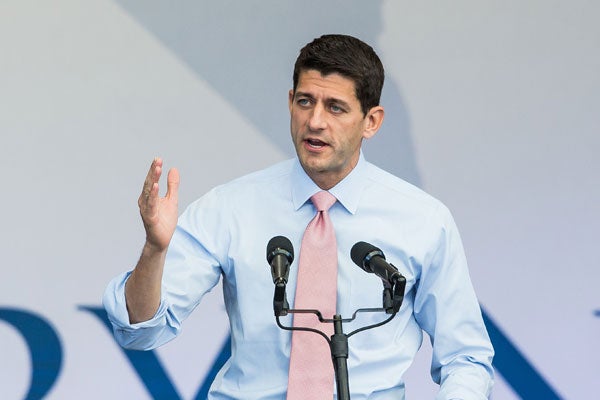Representative Paul Ryan (R–WI) is receiving criticism for including two solar-generation projects in his budget plan as “failed” projects despite the fact that Mesquite Solar 1’s project in Phoenix is generating electricity and SolarReserve’s project is under construction and recently entered a contract to sell power to California’s largest utility.
Although these companies have not gone belly-up Solyndra-style, it does not make the loan-guarantee program a success. Quite the opposite.
If Mesquite Solar 1 and SolarReserve remain profitable, that is all the more reason not to have the loan-guarantee program. These companies should obtain their financing 100 percent through private markets. In fact, SolarReserve, recipient of a $737 million loan guarantee, has a number of private equity firms invested in the project and boasts that the company “has assembled an experienced team of executives, engineers, developers and financial experts that have previously developed and financed more than $15 billion in renewable and conventional energy projects in more than a dozen countries around the world.”
Similarly, Mesquite Solar 1, recipient of a $337 million loan guarantee and $1.9 million stimulus grant, is owned by Sempra Energy and has a market capitalization of over $19 billion. Clearly there’s plenty of private money available if investors believe these projects are going to be successful. Venture capitalists are perfectly capable of making these investments and reaping the rewards from risk or suffering the losses from bad investments.
Furthermore, a successful solar company does not mean it’s a good deal for energy consumers. Both companies are selling to California’s Pacific Gas and Electric Company (PG&E). In fact, in Mesquite Solar 1’s case, they entered into a contract with PG&E before receiving the loan guarantee.
California law mandates that the utility must purchase 25 percent of its electricity from renewable sources by 2016 and 33 percent by 2020. With respect to SolarReserve entering into a contract with utility PG&E, the state utility commissioner acknowledged, “This is expensive, there’s no getting around it, but I think this technology is something that’s worth investing in.” If electricity generated by these projects were competitive with other sources of energy, there wouldn’t be a law mandating its use.
Right now, families are forced into buying pricier electricity and taxpayers are on the hook if the project fails. And because many of these projects are in early stages of development, labeling them successes is premature—and if they do go bankrupt, the taxpayer funds are merely providing a lifeline.
Beyond the risk to American families for footing the bill for failed projects and the handout to companies for financially viable ones, loan guarantees have other negative impacts on the economy. By subsidizing a portion of the actual cost of a project through a loan guarantee, the government is allocating resources away from more-valued uses to less-valued uses. In essence, these guarantees and loans direct labor and capital away from more competitive projects. This reduces the incentive for the energy investor or business to manage risk, innovate, and increase efficiency, and it crowds out other innovative energy projects that do not receive loans.
The government’s intervention in the market decreases the incentive to innovate and increases the incentive to use the political process and lobby for handouts. Loan guarantees promote cronyism that rewards political connectedness over market viability.
It’s entirely too early to determine if Mesquite Solar 1 and SolarReserve will be successful companies. But it’s not too early to make a determination about the Department of Energy’s loan-guarantee program. Whether a company is profitable or not, the program’s a failure.

























